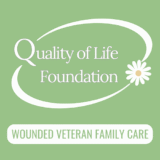Program of Comprehensive Assistance for Family Caregivers
Assessment of Supervision, Protection, and Instruction
Background
The VA MISSION Act of 2018 created a new standard for the VA’s Caregiver Support Program’s (CSP) Program of Comprehensive Assistance for Family Caregivers (PCAFC). It also expanded eligibility beyond Post 9/11 caregivers. These changes prompted a revision in the evaluation process which VA established in CFR RIN 2900-AQ48 issued October 1, 2020. The new standards are defined in VHA Directive 1152(1) issued October 1, 2020. Two significant changes are: (1) the Activities of Daily Living (ADL) standard requires care to be provided “each and every time” an ADL is performed and (2) the standard for Supervision, Protection, and Instruction (SPI) now requires “substantial daily care”. This sheet describes only the part of the Veteran’s Functional Assessment Instrument that deals with Supervision, Protection, and Instruction.
How To Prepare for the Evaluation:
Under the application process step known as the Veteran’s Functional Assessment, a nurse with the Caregiver Support Program will ask you, the caregiver, and the veteran how you assist with each aspect of Supervision, Protection, and Instruction listed below. If you have been providing care for a long time, it is helpful to write down what you do each day to make sure that you capture all the assistance you are providing and how you do so. (Some of it becomes so rote that you forget it is a caregiver duty.)
During the assessment, be as specific and as expansive as possible. The CSP staff will request the caregiver describe what they do for the veteran for each aspect of Supervision, Protection, and Instruction. Describe what makes it necessary for you to do each thing for the veteran.
For the safety and supervision portion of the assessment, they will ask a set of specific questions. Expound on each and every question that is relevant. Answer with what you do, why you do it, and how often you do it. Never just say, “I help with medication management.” Instead say, “I help with medication management of ___# of medications because the veteran cannot manage them due to _____________, and I must do this (each time, daily, weekly, monthly - however often you have to do it)." If meds are given once a day, say that. If you monitor medication the veteran is taking, explain why you have to do that. If you must monitor the friends and family of the veteran because the veteran is easily exploitable due to judgement issues, say so, and explain what disability causes that to be so, and how often/in what situations it happens.
Aspects of Supervision, Protection, and Instruction
1. Medication Management
Medication Management
The caregiver’s role may be defined as no help or supervision, medication setup, visual or verbal reminders, or medication administration.
2. Self-Preservation
Self-Preservation
The judgement and physical ability to cope, make appropriate decisions and take action in a changing or potential harmful situation
3. Self-Neglect
Self-Neglect
The veteran may ignore the need to care for themselves due to or through:
A. substance abuse that leads to health and safety concerns
B. behaviors that pose a threat of harm to self or others
C. dehydration or malnutrition
D. hygiene that may compromise health
E. impairment of orientation, memory, reasoning/judgment
F. inability to manage medication or to seek medical treatment that may threaten health
G.safety and/or
H. unsafe/unhealthy living conditions.
4. Risk of Neglect
Risk of Neglect
Risk of neglect, abuse, or exploitation by another person
5. Safety Inside the Home
Safety Inside the Home
Support level to maintain safety in the home, such as assistance with activities that require remembering, decision-making, or judgement
6. Safety Outside the Home
Safety Outside the Home
Support level to maintain safety outside of the home, such as assistance with activities that require remembering, decision-making, or judgement
7. Delusions/Hallucinations
Delusions / Hallucinations
Person engages in markedly inappropriate behavior that affects a person’s daily functioning and social interactions. Behavior is characterized by a radical change in personality and a distorted or diminished sense of reality which may be displayed as catatonic behavior, delusions, disorganized speech, hallucinations, or thought disorder.
8. Agitation
Agitation
Person has a tendency, or would without intervention, to become suddenly or quickly upset or violent as displayed through agitation, anger, or frustration.
9. Impulsivity
Impulsivity
Person has a propensity, or would without an intervention, for sudden or spontaneous decisions or actions which may be displayed as a disregard for personal safety.
10. Self-Direction
Self-Direction
This is based on legal capacity. Is the veteran able to identify their own needs? Can this person provide/arrange for their health and safety?
How the Assistance Provided is Evaluated
Once you, the caregiver, and the veteran have described the assistance provided to the veteran, the Caregiver Support Program nurse will notate the veteran’s level of functioning based on interventions needed and how often they are needed. This is based on the description you provide. The answers will help determine if assistance is needed from a caregiver to maintain a veteran’s personal safety on a substantial DAILY basis.
Finally
Once this assessment is uploaded to MyHealtheVet, look over the assessment to make sure that it accurately reflects the veteran’s functional ability and your description of the assistance that you provide the veteran.

